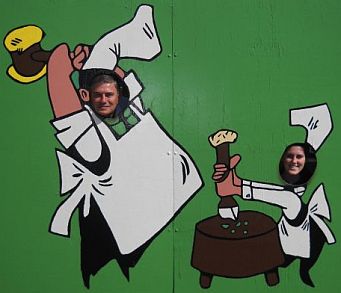|
It could be said the only difference between living a transformed life in the world and living an untransformed life in the world is choosing a cardboard caricature which authentically represents who you really are, to stick your head through into the world. In this way, you take responsibility not only for your own experience of the world but you also take responsibility for how others experience you in the world.
This isn't "the truth" ... and it may be. Rather it's a useful way of looking at what's real, a useful tool for distinguishing concept from direct experience. It's an arguably useful implement for distinguishing between what we've always unquestioningly considered to be real ie what we've always unquestioningly known to be real, and what's really real.
There are many ways of looking at what's real, and there are many possible answers to the question "Where are you and the world located in relation to each other?". Here's another possible answer to the question "Where are you and the world located in relation to each other?" when answered coming from experience rather than as a concept. Rather than "I'm in the world, and the world is all around me" or "The world is always and only in front of me", another answer could be "I'm the context for the world, and all the world is in me" - like an experience.
